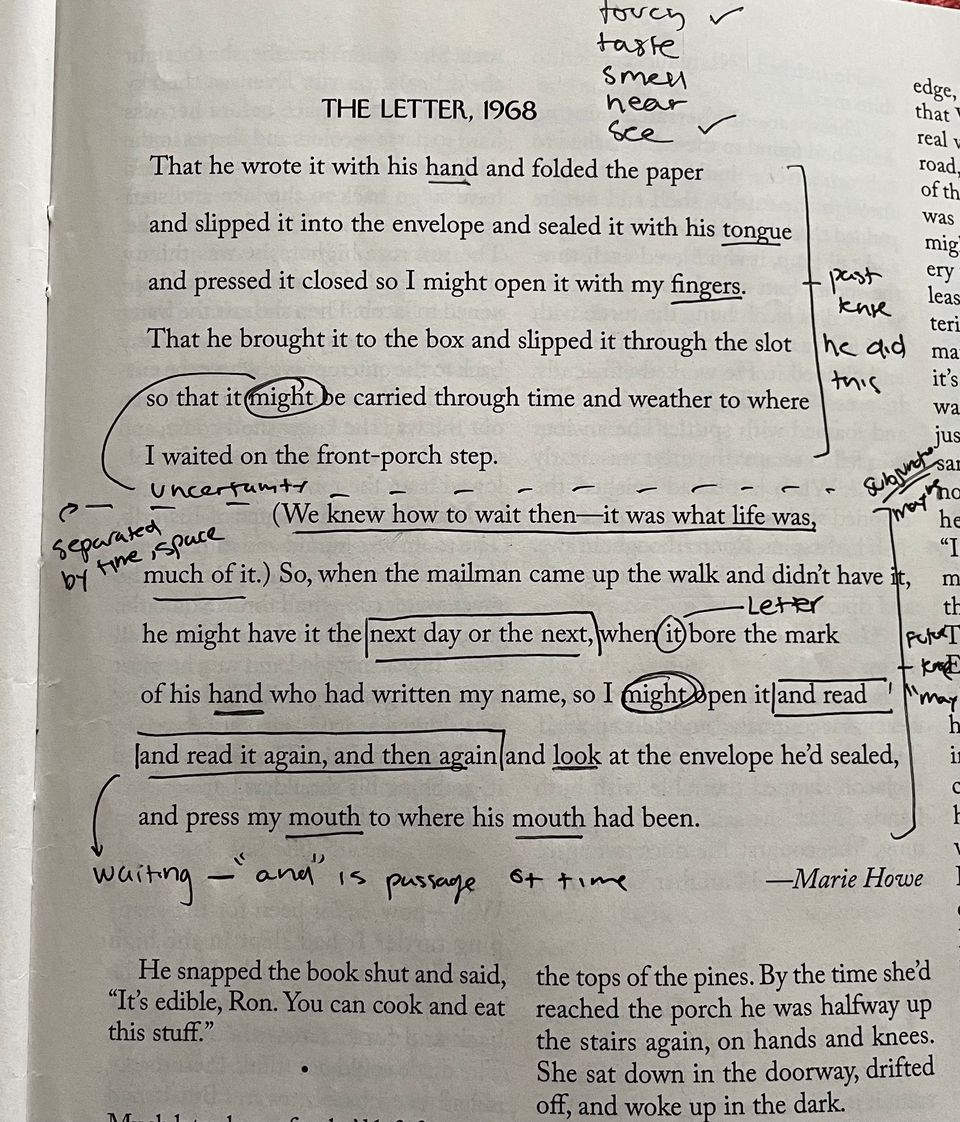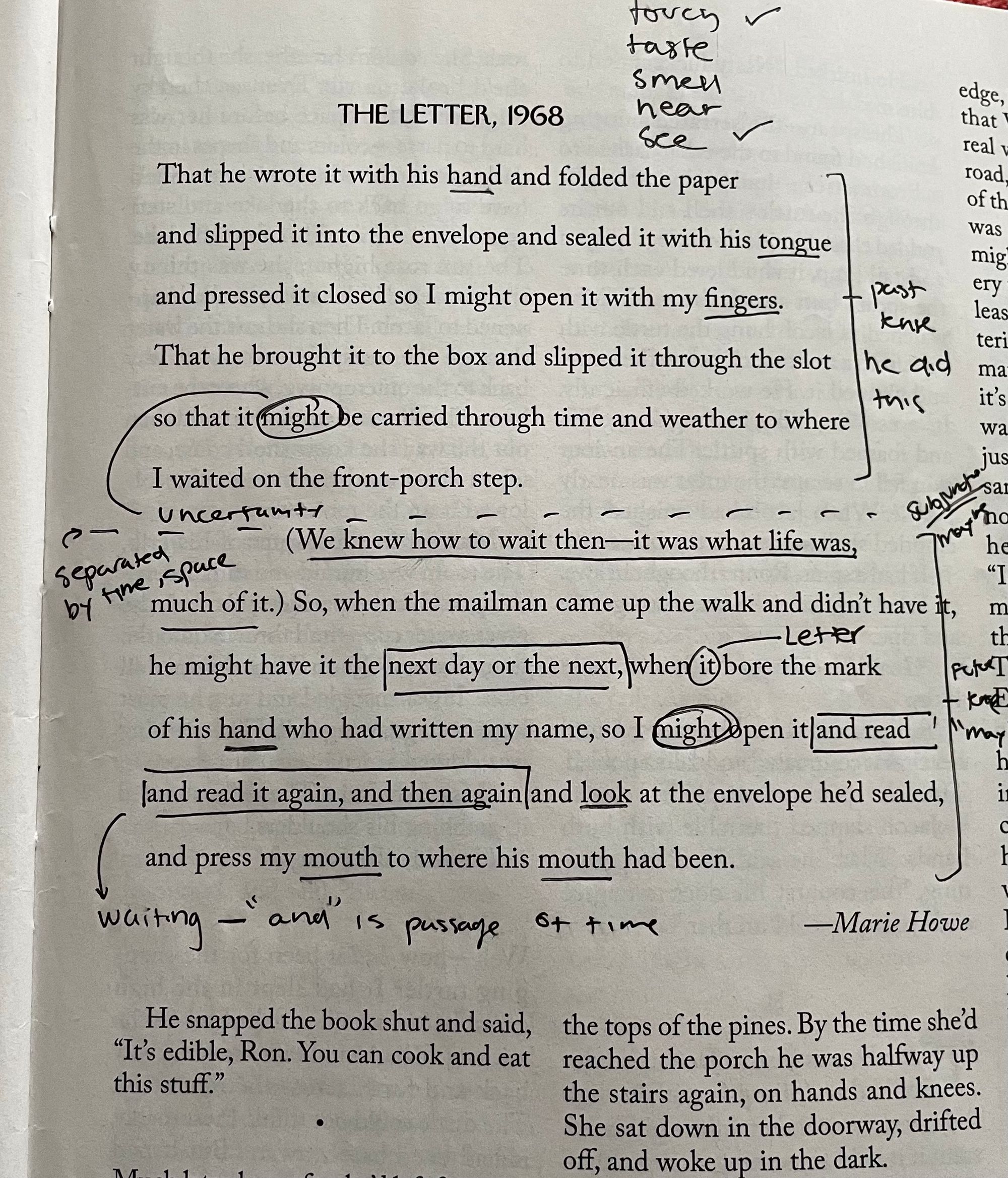The Letter, 1968


"The Letter, 1968" by Marie Howe was published in the print edition of the March 21, 2022 issue of the New Yorker. It’s sandwiched snugly within Zach Williams’ fiction piece, Wood Sorrel House.
Howe, born in Rochester, New Yorker, is an American poet praised for capturing the metaphysical and spiritual dimensions of normal life. She is a Chancellor to the Academy of American Poets, a prolific author, a professor, and my guide back to poetry.
"The Letter, 1968" is the first poem I’ve read in 5 years. In high school, I learned the basics of literary and poetic analysis. Back then, I could identify iambic pentameter and correctly distinguish similes and metaphors. As an assignment, I could naively analyze a poem through repetition. I ingested the words and interpreted the themes, but never could the rhythm and intensity seep into me.
Poetry was always practice not leisure. Only for the sophisticated to enjoy—untethered by grammar or convention—poetry sits somewhere between classical music and abstract art. It bears the sensorial familiarity that elicits awe yet remains abstract enough for an individual’s confusion to be misconstrued as ignorance.
My former education taught me to analyze a poem as such:
"The Letter, 1968" follows the writer and recipient of a letter during the Vietnam War. Delivered punctually in two stanzas, Howe describes a military spouse’s, anticipation for a letter from her husband with corporeal diction and a theme of hope.
The first stanza narrates the husband folding, sealing, and sending the letter from the imaginative perspective of the recipient. And like the physical separation of the pair, the second stanza cuts to describe the wife waiting for the letter .
Across the piece, Howe addresses hope by infusing the subjunctive mood. There is uncertainty that the letter “might be carried through time and weather”, and that the wife “might open it and read [it]”. Yet, despite hopelessness, she waits and longs for the letter because its existence means her husband’s survival and eventual touch.
Howe’s use of corporeal diction, writing about the soldiers hands, tongue, fingers, and lips, drives the theme further. This language bridges across the agonies of war and highlights the humanity many rely on during times of suffering. The wife will wait “the next day or the next” because the letter is a small touch. She holds on to hope for the day their fingers interlace and their lips meet once more, but until then, she waits for the envelope he sealed just to “press [her] mouth to where his mouth had been”.
What my high school analysis could never communicate was a poem’s emotional impact. I could tell you how two stanzas are a metaphor (or simile?) for physical separation but never could I say how a piece made me feel. Now, unbounded by rubrics and reintroduced to the art, I see "The Letter, 1968" as an invitation to another time.
Howe’s singular parenthetical sentence reads; “We knew how to wait then—it was what life what, much of it”. For a brief moment, Howe guides readers past the couple and urges readers to reflect on the time period as a whole.
Life for many in 1968 was waiting for a return that would never happen. From 1955-1975, as many as 2 million Vietnamese civilians, 1.1 million North Vietnamese and Viet Cong fighters, 58,200 U.S. armed forces, and many others, loss their lives. The Letter, 1968, is not only a letter between lovers but a reminder across time.
A reminder of loss and suffering brought upon by war, an inhumanity that plagues humans. And 54 years later, this couldn’t be more relevant today. But also, "The Letter, 1968" is a reminder that despair is often managed by hope.
Without Howe, poetry might have been lost to me forever. As an art form it’s still shrouded in a sense of sophistication that I will struggle to reject. But thanks to "The Letter, 1968", it’s an art form I can learn to embrace. Unknowingly, as Howe wrote it with her hand and folded the paper and slipped it into the slot, I waited so that I might open it and read it, and share it and share it again.

Thanks for reading! If you liked it, please share it with a friend! If you didn't, I'm sorry. :(
Email me (openthoughtblog@gmail.com) and let me know how I did or if you have any critiques, comments, or recommendations. If you liked this or any other post, please consider subscribing. :)
Member discussion